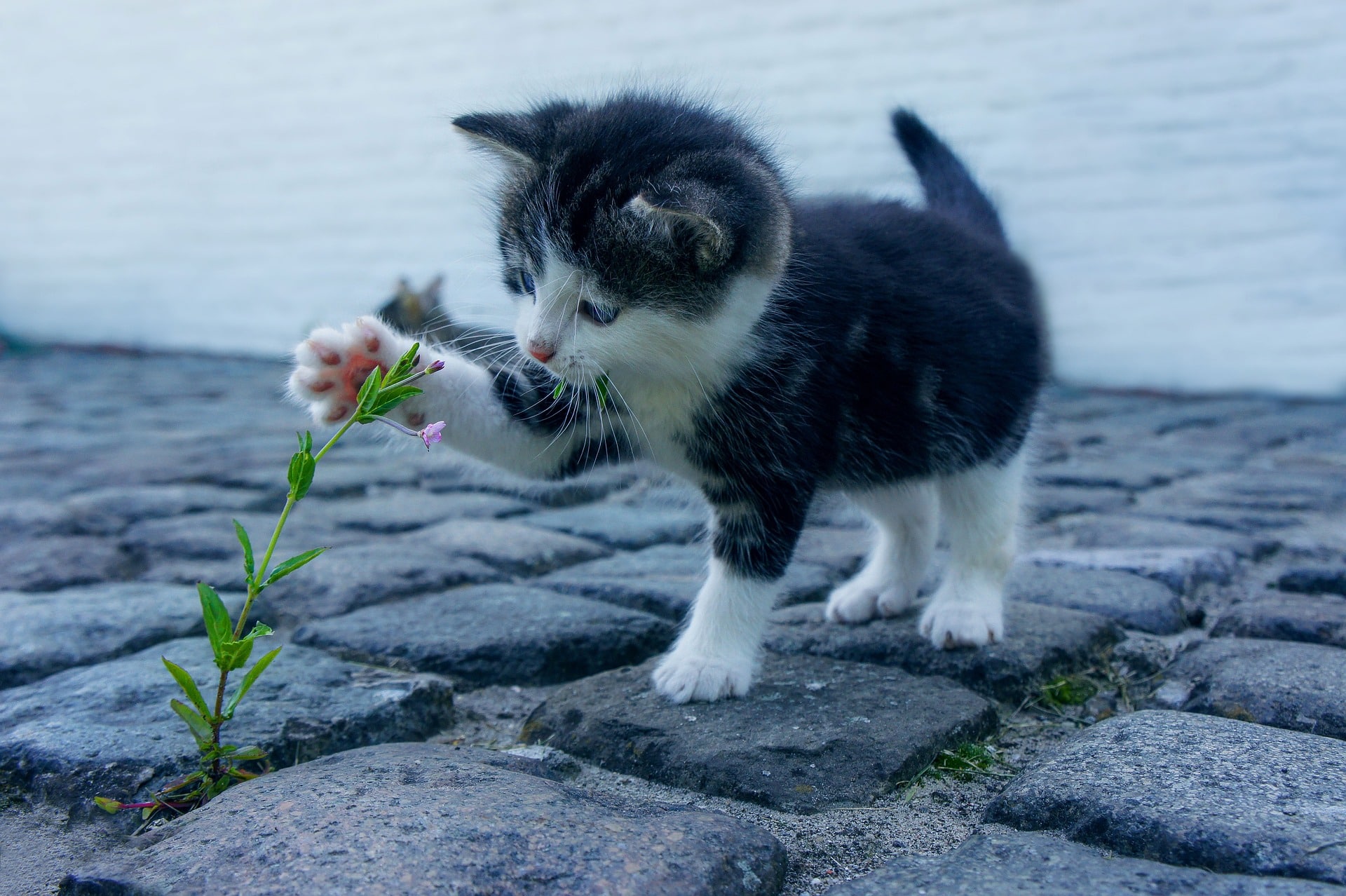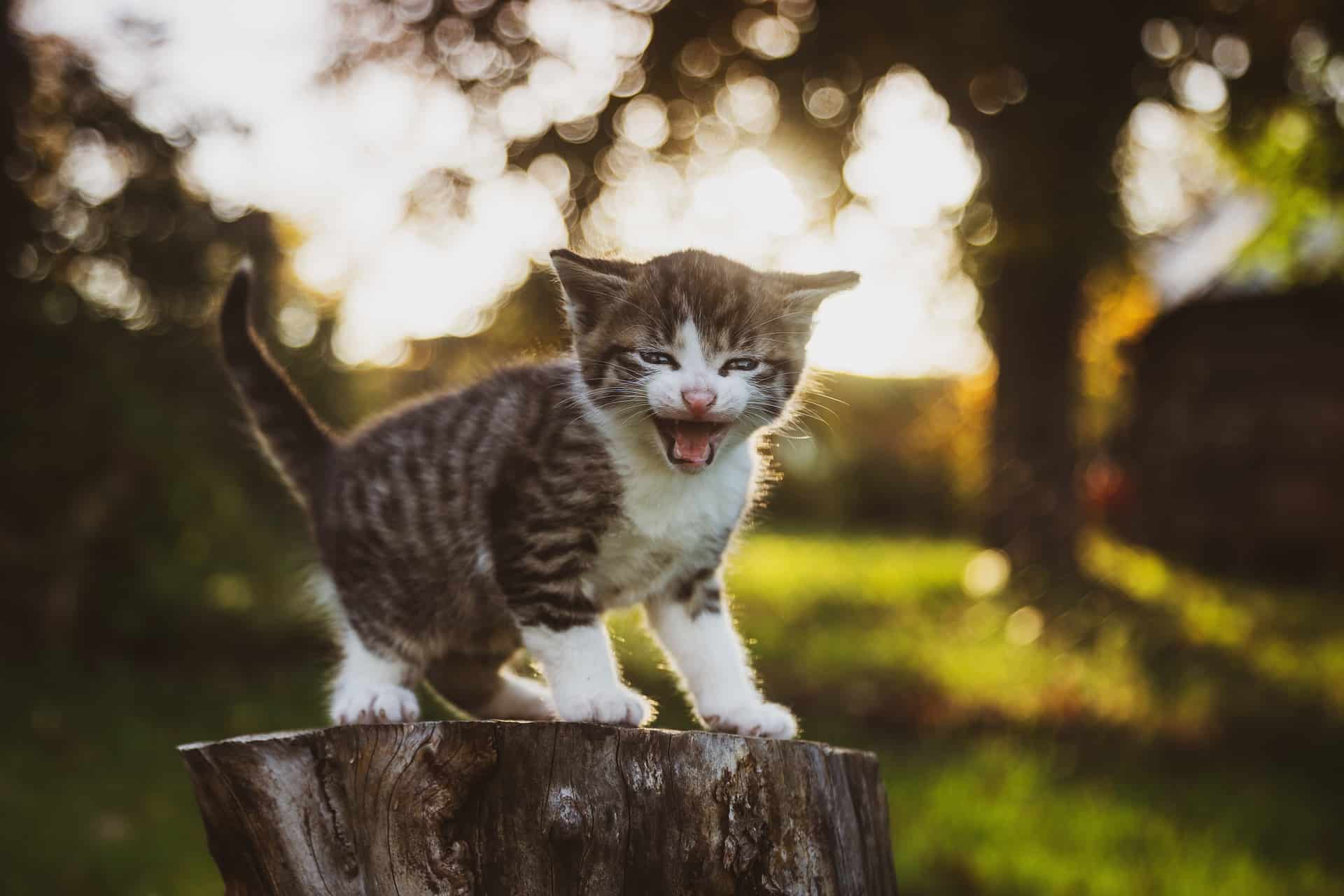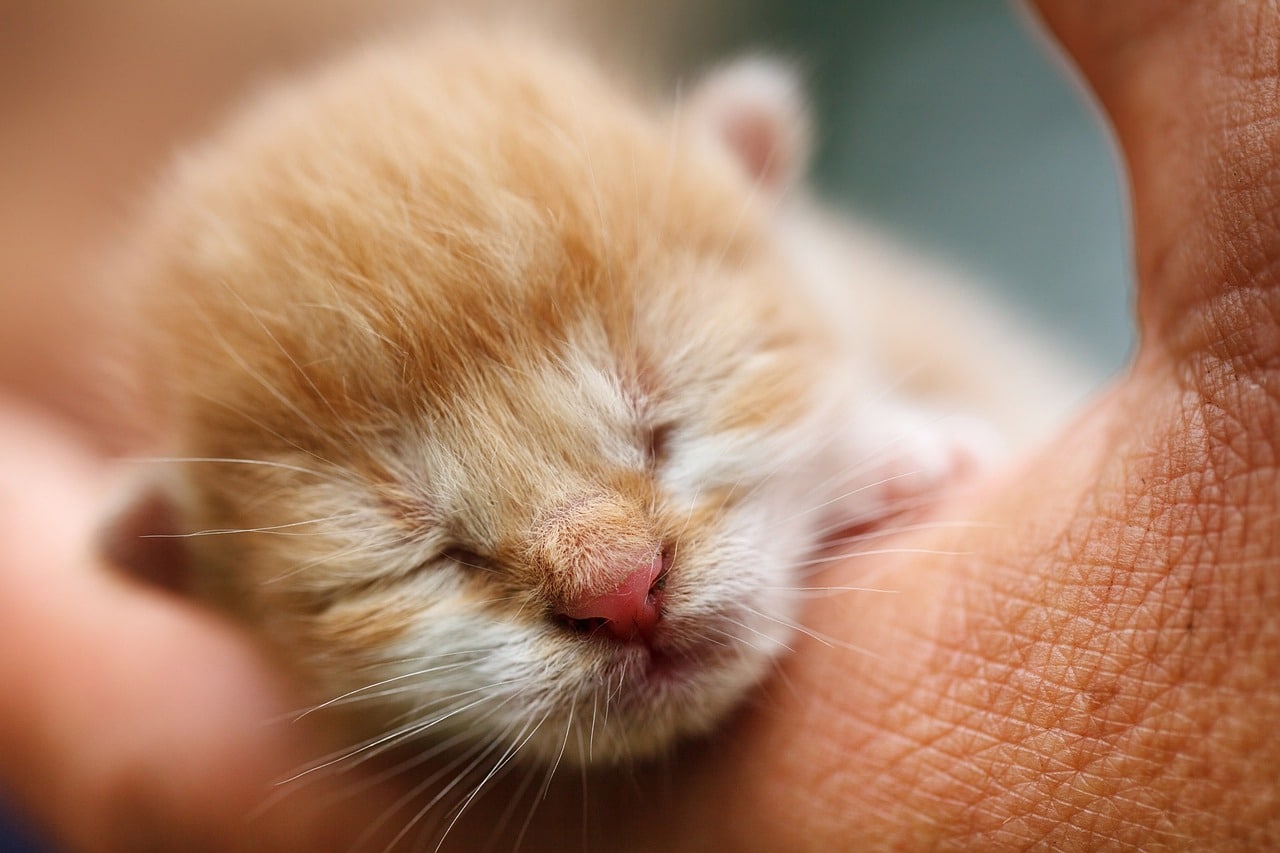
FeLV (Feline Leukemia Virus) It is an infectious disease caused by a retrovirus that affects cats and can cause other serious pathologies. This form of leukemia causes an immunosuppressive state that makes the cat more prone to infection, considerably increasing the risk of mortality.
Feline leukemia most often affects feral cats or cats that spend long hours outdoors. Its high contagion potential makes it a specific pathology in the highest-risk feline populations. infection by Felv it is dangerous for the health of the domestic cat because it is a virus with a high pathogenic potential. This means that is capable of severely depressing the immune system and create pathological conditions that can become very severe for the animal (infections and tumors, especially lymphomas).
What is FeLV disease?
FeLV belongs to the retrovirus family which means that it works by infecting cells and reproducing inside them without being detected by the immune system. This contagious leukemia usually affects young people especially. It attacks the animal's immune system by causing a large reduction in the white blood cell count. By compromising the immune response, a variety of complications and diseases can easily arise in the animal, jeopardizing its health and quality of life. However, Exposure to the feline leukemia virus does not have to be a death sentence. About 70% of cats found with the virus are able to resist the infection or clear the virus on their own.
Unfortunately, a part of the affected subjects may also be affected by what is called "regressive" infection, that is, by a kind of "hidden" infection that is not detected by common tests, but which can cause the disease. Veterinary control of the domestic cat therefore becomes essential for its health and well-being. cats normally are infected by direct contact with infected fluids from other cats and infection linked to territorial fights or coexistence with positive subjects is very common. In other words, the largest promiscuity of our kitten exposes it to a greater possibility of contagion. So beware of the cat that loves to wander in the garden or on the street and those who are attracted to fights and fights with their companions, especially if they are strays.

FELV symptoms
The Feline Leukemia Virus symptoms They can be very varied, but in general they can be summarized in the following:
- severe panleukopenia
- myelodysplasias
- neuropathies
- Lymphoma
- anemia
- weakness
- inappetence, lack of appetite
- loss of hair
- pale gums
- yellow color in the mouth
- white in the eye
- enlarged lymph nodes
- labored breathing
- stomatitis
- Fever
- Fatigue
- thin
- immunosuppression.
Immune system depression increases the cat's susceptibility to contracting viral and bacterial infections which can cause:
- Threw up
- chronic diarrhea
- jaundice
- respiratory infections
- skin lesions
- lymphomas
- pancytopenia
- seizures
The FeLV positive cat it can also remain asymptomatic for a few months or even years, until the complete development of the disease.
Survival of the virus in the environment
The FeLV virus is extremely labile in the environment, survive only a few minutes, and common disinfectants (such as bleach) kill it easily, but it is also sensitive to detergents, heat, and drying. If you've had a FeLV+ cat that's gone, you don't need to disinfect the house or wait months before getting another!
FeLV transmission
The virus penetrates the subject oronasally or mouth to nose. It may be present in secretions such as mucus, saliva, blood, and cat milk. When the virus invades the body, affects the bone marrow and to the cells responsible for the production of leukocytes that are part of the body's immune defenses.
The FeLV virus can be transmitted from one cat to another through through the exchange of bodily fluids such as saliva, blood, and nasal or eye secretions. Washing (licking) and fighting (curling) appear to be the most common ways of spreading the infection. Puppies can contract the disease in utero or through infected mother's milk. The disease is often transmitted by apparently healthy cats, so even if a cat appears healthy, it may be infected and capable of transmitting the virus.
During the last 25 years, the spread of FeLV has decreased significantly thanks to the advent of diagnostic tests and the spread of vaccines.

Is it transmitted to humans?
The FELV feline leukemia virus is extremely common among cats, but it is not transmitted to humans or other animals that are not cats. It predominantly affects younger cats, especially feral and feline colony cats, but it can also affect owned cats that spend a lot of time outdoors in the company of other cats.
FeLV leukemia is a disease that affects only cats. It cannot be transmitted to humans, dogs, or other animals. FeLV is transmitted from cat to cat through saliva, blood, and to some extent urine and feces. The virus does not live very long outside the cat's body, probably only a few hours.
How can we protect our cat from the virus?
keep your cat inside home and away from infected cats is a sure way to prevent him from contracting contagious leukemia. Additionally, the vaccines can be given to cats at high risk of exposure, such as those that go outside or live in shelters or colonies. Only cats that test negative for FeLV should be vaccinated, and those that have received the vaccine should also be tested for possible exposure to the virus.
The test should not be administered within 30 days of a possible exposure. This is because there is a variety of health problems that may be associated with the virus.
New cats or kittens over eight weeks of age should be tested for the virus before being introduced into a multi-cat household. Most vets advise against introduce a new cat into a house when there is un cat positive for FeLV by the risk of get the infectioneven when vaccinated. In addition, the stress of a newcomer can negatively affect to the FeLV-positive cat.
In addition to sterilize to wild cats, the only prevention for FeLV is to vaccinate house cats and cats living in cat colonies. In most cases, the Felv vaccine does not protect against infection, but it allows the infected cat to become aviremic in a short time, that is, not contagious to other cats.
Diagnosis of Feline Viral Leukemia
Laboratory diagnosis made through relative blood tests is essential. You can use various "rapid tests" from SNAP TEST, which with a small blood sample allows to identify infected animals only if there is an ongoing viraemia. PCR in blood or marrow is undoubtedly the most reliable because it identifies the virus with certainty.
More feline leukemia tests
Your vet can diagnose the disease by doing a simple blood test called an ELISA, which identifies FeLV proteins in the blood. This test is very sensitive and can identify cats with very early infections. It is important to remember that some cats will clear the infection in a few months and test negative afterwards.
A second blood test, the IFA, detects the progressive stage of the infection and cats with positive results on this test are unlikely to shed the virus. The IFA test is done in a laboratory, rather than the vet's clinic. In general, IFA-positive cats have a poor long-term prognosis.
Felv can only be diagnosed by a veterinarian, by carrying out some clinical tests. In some specific cases, to confirm the diagnosis, these tests can be repeated later.
Main forms of FeLV infection in cats:
- Neonatal: The sick mother transmits the virus to her offspring before birth or through infected milk.
- Secretions: when the healthy animal comes into contact with secretions such as tears, saliva, feces and infected urine.
Treatment and vaccine for feline leukemia
Feline leukemia preferentially affects young cats, especially to stray or outdoor cats. A part of the cats that become infected manage to eliminate the virus spontaneously and become immune, although the duration of this natural immunity is unknown. However, in cats where immunity does not develop, the virus invades the body, particularly the bone marrow, where blood cells and those responsible for the immune system are produced.
There is no definitive cure for feline leukemia infection, but there are supportive treatments (such as drugs that help the activity of the immune system) that can help extend the life expectancy of the infected subject, also ensuring good quality. However, a FeLV-positive cat is still a feline with a higher risk of contracting neoplastic and infectious diseases, as well as an animal with a shorter life expectancy than a healthy cat.

take care of him
As supported by a retrovirus, there are no specific cures. Taking into account that the virus affects the immune system, it is very important to try to keep the cat in good health to avoid the development of secondary diseases or infections.
However, the regular veterinary checks and good preventative medical care can help these cats feel good for some time and protect them from secondary infections. Semi-annual physical exams, laboratory tests, and pest control can prevent complications and identify problems quickly.
All cats infected with FeLV should be kept indoors and spayed.
Therefore, there is currently no cure for FeLV infection. Secondary infections can be treated as they appear, and cats with cancer can receive chemotherapy. However, the prognosis is dire for cats with compromised bone marrow or diffuse lymphoma.
FeLV prophylaxis:
There is a vaccine available that provides good protection. However, the FeLV vaccine is ineffective in positive subjects. Contact of infected subjects with healthy cats should be avoided in any way. Namely, they cannot frequent the same environments, use the same litter boxes or drink and eat from common bowls.
Non-core vaccine
There is currently a vaccine against Felv (only cats that test negative can do it) which is part of the so-called "non-core" vaccines, that is, not mandatory, but recommended in case of coexistence in colonies or environments with a lot of movement of the cat or if a lot of time passes outdoors, as this puts them at greater risk of contracting the infection. A good rule of thumb, then, is to vaccinate your kitten if the life it leads exposes it to contagion with other felines potentially carrying the disease. Another important precaution is Periodic visit to the primary veterinarian. Thus, the disease can be identified from the moment it appears. In the case of feline leukemia, in fact, a controlled diet and the appropriate treatments can help the cat to lead a normal life and in full well-being.
Moment there is no definitive cure for Felv, although it is possible to carry out medical therapies that increase the life expectancy of the cat with Felv. The life expectancy of a FeLV positive (or FeLV+) cat depends on a number of factors such as age, state of health, the presence of other pathologies and the stage of the disease at the time of diagnosis, but the prognosis is variable in any unfortunate case.
In addition to correct pharmacological therapy, defined by the veterinarian after medical assessment, Regular checks are essential that allow the veterinarian to control the state of health of the cat, thus avoiding the appearance of more serious pathologies.

What can you do for your asymptomatic FeLV+ cat?
Unfortunately, there are no treatments that can eradicate the virus, but there are a series of devices and substances that increase the quality and duration of life (prolonging the asymptomatic phase of FeLV). For a FeLV cat to live better and longer, it needs:
- Good nutrition,
- avoid stress,
- keep it indoors and warm (also to avoid infecting other cats outside that are not vaccinated),
- avoid contact with cats sick with any infectious pathology,
- no raw meats and dairy (FeLV+ subjects are at increased risk of pathologies from bacteria and parasites that may be present in food). It is advisable to carry out a stool analysis and/or deworming periodically,
- always carry out trivalent vaccination, but it is advisable to do it with an inactivated vaccine,
- Routine checks by the vet (every 6 months in the absence of symptoms) with special attention to the oral cavity, eyes, lymph nodes, skin, body weight (it is important to periodically check body weight because weight loss is usually the first sign worsening of clinical conditions).
- Recommended blood counts every 6 months (blood disorders are one of the first signs of full-blown disease) and baseline blood and urine tests annually.
- Beware of the possible appearance of lymphomas, red blood cell aplasia, stomatitis, opportunistic infections. Early therapeutic intervention increases the chances of success.
- Use immunosuppressive drugs (eg corticosteroids) only when strictly indicated in the specific situation of the specific cat (in case of severe stomatitis, it is better to proceed with extraction of all teeth, rather than chronic use of corticosteroids).
- Spaying is definitely recommended, for all cats that can still withstand surgery (perhaps by taking a few more precautions, such as giving appropriate antibiotics in the postoperative period, and doing a preoperative blood profile before administering anesthetic); It is advisable even if it is to avoid the hormonal stress to which an uncastrated cat is subjected.
What about Interferon for FeLV?
There are no definitive data on the benefit derived from the use of immunomodulators such as interferonbut they can be used safely. Feline omega interferon can improve prognosis and survival, but more studies are needed in this regard. In any case, it has been seen that it is not harmful to the cat and that it can help it get along better, but as I have well commented, all this is based on statistics and opinions of people who have used it, but there is no scientific evidence. .